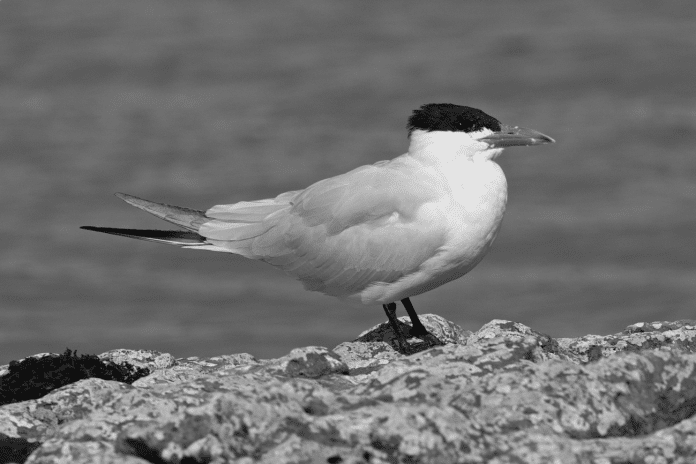Introduction to Caspian Terns
Caspian Terns, known scientifically as Hydroprogne caspia, are majestic and fascinating birds found in the beautiful country of Tanzania. With their striking appearance and unique behaviors, they have become a subject of great interest for wildlife enthusiasts and photographers alike. In this article, we will take you on a journey to uncover the secret life of Caspian Terns in Tanzania, providing insights into their habitat, distribution, life cycle, behavior, and feeding habits.
Habitat and Distribution of Caspian Terns in Tanzania

Caspian Terns are primarily found along the coastal areas of Tanzania, including the Indian Ocean coastline and the shores of large lakes such as Lake Victoria and Lake Tanganyika. They are also known to inhabit wetlands, rivers, and estuaries. These birds prefer open areas with easy access to water, where they can find an abundance of fish, their primary source of food. Tanzania’s diverse range of habitats provides an ideal environment for Caspian Terns to thrive.
Life Cycle of Caspian Terns
The life cycle of Caspian Terns is a remarkable journey that begins with courtship rituals and ends with the successful fledging of their offspring. Breeding season usually starts in the early months of the year when the birds return to their breeding grounds. Male Caspian Terns engage in elaborate courtship displays, showcasing their impressive flight skills and offering fish as gifts to their potential mates. Once a pair is formed, they build a nest on the ground, often in colonies with other tern species. The female lays around two to three eggs, which are incubated by both parents for about three weeks. After hatching, the chicks are cared for by their parents, who diligently protect them from predators and provide them with nourishment until they are ready to fledge.
Behavior and Feeding Habits of Caspian Terns
Caspian Terns are known for their graceful flight and agile diving abilities. They have a distinctive way of hunting, hovering in the air before plunging into the water to catch fish with their sharp beaks. Their diet mainly consists of small to medium-sized fish, such as tilapia and catfish, which they catch by diving from heights of up to 50 feet. These birds are highly skilled hunters and can accurately spot their prey from above the water’s surface. Caspian Terns are also social birds, often seen in groups or colonies, where they engage in communication through various vocalizations and body postures.
Unique Characteristics of Caspian Terns

Caspian Terns possess several unique characteristics that set them apart from other bird species. They are the largest terns in the world, with an impressive wingspan of up to 5 feet. Their striking appearance is characterized by a deep red bill, a black cap on their head, and a white body. During the breeding season, their bill turns bright red, adding to their allure. These birds have long, slender wings and a buoyant flight style, gliding effortlessly over the water as they search for their next meal. Their call is a loud, raspy “koww” sound, which can be heard from a distance.
The Importance of Caspian Terns in the Ecosystem
Caspian Terns play a crucial role in the ecosystem of Tanzania. As top predators in their habitat, they help maintain the balance of fish populations by controlling their numbers. By feeding on smaller fish, they prevent overpopulation, which can have detrimental effects on the overall health of aquatic ecosystems. Additionally, Caspian Tern colonies provide nesting sites for other bird species, creating a diverse and thriving environment for avian life. Their presence in Tanzania’s coastal and wetland areas contributes to the overall biodiversity and ecological stability of the region.
Challenges and Threats Faced by Caspian Terns in Tanzania
Despite their significance in the ecosystem, Caspian Terns face various challenges and threats in Tanzania. Habitat loss and degradation due to human activities, such as coastal development and pollution, pose a significant risk to their survival. Increased disturbance from tourism and recreational activities also disrupts their breeding and feeding behaviors. Furthermore, climate change and its impact on water levels and fish populations can affect the availability of food for these birds. It is essential to address these threats and implement conservation measures to ensure the long-term survival of Caspian Terns in Tanzania.
Conservation Efforts for Caspian Terns

To protect the Caspian Tern population in Tanzania, conservation efforts have been initiated by local organizations and authorities. These efforts include the establishment of protected areas and the implementation of regulations to minimize disturbance to nesting sites. Additionally, education and awareness programs aim to inform the public about the importance of conserving Caspian Terns and their habitats. Collaborative research projects and monitoring programs help gather valuable data on population trends and behavior patterns, aiding in the development of effective conservation strategies. These combined efforts are crucial for the preservation of Caspian Terns in Tanzania.
Capturing the Beauty of Caspian Terns: A Photographic Journey in Tanzania
Tanzania offers exceptional opportunities for photographers to capture the beauty and grace of Caspian Terns in their natural habitat. With its diverse landscapes and abundant birdlife, the country provides a perfect setting for stunning wildlife photography. Whether it’s capturing the terns in flight, diving into the water, or engaging in courtship displays, photographers can witness and document remarkable moments that showcase the unique behaviors and characteristics of these birds. A photographic journey through Tanzania allows us to appreciate the secret life of Caspian Terns and share their captivating story with the world.
Tips for Photographing Caspian Terns
To capture the best photographs of Caspian Terns in Tanzania, there are several tips to keep in mind. Firstly, having a telephoto lens with a focal length of at least 300mm will allow you to get close-up shots without disturbing the birds. Patience is key when photographing wildlife, so take your time and observe their behavior to anticipate their movements. Position yourself at eye level with the terns to create a more intimate and engaging composition. Pay attention to the lighting conditions and try to shoot during the golden hours of sunrise or sunset for warm and soft light. Lastly, respect the birds’ space and avoid any actions that may cause stress or disturbance.
Conclusion: Appreciating the Secret Life of Caspian Terns in Tanzania
The secret life of Caspian Terns in Tanzania is a captivating story that unfolds in the country’s coastal and wetland areas. These magnificent birds, with their impressive size, striking appearance, and unique behaviors, have become an integral part of Tanzania’s natural heritage. By understanding their habitat, distribution, life cycle, behavior, and feeding habits, we gain a deeper appreciation for their importance in the ecosystem. However, the challenges they face and the need for conservation efforts remind us of our responsibility to protect these fascinating creatures and preserve their habitats for future generations. Let us embrace the beauty of Caspian Terns and celebrate the wonders of nature in Tanzania.


































